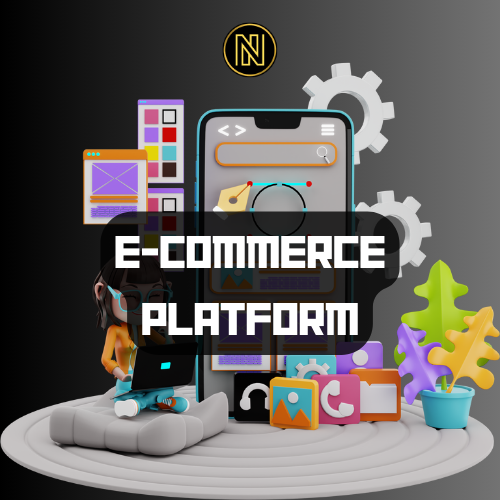E-commerce Platform
-
8686 Views
An e-commerce website is a digital platform that allows businesses to sell products and services online. It serves as a virtual storefront where customers can browse, select, and purchase items. The website includes various modules and features to enhance user experience and streamline operations.
Key Modules and Features
User Interface (UI) & User Experience (UX):
Responsive Design: Ensures the website is accessible and functional on all devices (desktops, tablets, smartphones).
Search & Filtering: Advanced search options with filters (price, category, brand, etc.) to help users find products quickly.
Product Categories: Organized display of products in different categories and subcategories.
Product Pages:
Images & Galleries: High-quality images with zoom features.
Product Details: Description, specifications, price, and availability.
Customer Reviews & Ratings: User-generated content to build trust and inform purchasing decisions.
Shopping Cart:
Add to Cart: Easy addition of products to the cart with options for quantity selection.
Cart Summary: Real-time updates on cart contents, total price, and estimated shipping.
Checkout Process:
Guest Checkout: Option to checkout without creating an account.
Multiple Payment Options: Support for credit/debit cards, PayPal, digital wallets, and other payment gateways.
Shipping & Delivery Options: Multiple shipping methods with estimated delivery times.
User Accounts:
Registration & Login: Easy sign-up and login processes with options for social media login.
Order History & Tracking: Users can view past orders and track current shipments.
Wishlist: Allows users to save products for future purchases.
Customer Support:
Live Chat: Real-time assistance for users.
FAQ & Help Center: Answers to common questions and guides.
Returns & Refunds: Easy initiation of return requests and refund processes.
Admin Panel Features:
Dashboard:
Sales Overview: Real-time insights into total sales, orders, revenue, and more.
Traffic Analytics: Data on website visits, user behavior, and conversion rates.
Product Management:
Add/Edit/Delete Products: Manage the product catalog, including pricing, descriptions, and images.
Inventory Management: Track stock levels, set low-stock alerts, and manage out-of-stock products.
Bulk Uploads: Upload multiple products at once via CSV or other formats.
Order Management:
Order Processing: View, manage, and fulfill customer orders.
Invoice Generation: Automatic creation and management of invoices.
Shipping Management: Integration with carriers for automated label printing and shipment tracking.
Customer Management:
Customer Database: View and manage customer profiles, including contact information and purchase history.
Segmentation: Categorize customers for targeted marketing efforts.
Customer Support: Manage customer inquiries and resolve issues.
Marketing & Promotions:
Discount Codes & Coupons: Create and manage promotional codes.
Email Marketing Integration: Tools for sending newsletters and promotional emails.
SEO Tools: Optimize product pages and content for search engines.
Affiliate Programs: Set up and manage affiliate marketing programs.
Content Management System (CMS):
Blog & News: Publish articles and updates to engage customers.
Banner & Ad Management: Manage promotional banners and advertisements on the site.
Reports & Analytics:
Sales Reports: Detailed reports on sales performance, revenue, and growth trends.
Customer Reports: Insights into customer behavior and demographics.
Product Performance: Data on best-selling products and inventory turnover.
Security & Compliance:
User Permissions: Define roles and access levels for different admin users.
Data Encryption: Ensure secure transactions and protect customer data.
GDPR Compliance: Features to ensure adherence to data protection regulations.
Multi-store Management (if applicable):
Multiple Storefronts: Manage multiple stores or brands from a single admin panel.
Localization: Support for multiple languages and currencies.
These features and modules provide a comprehensive solution for running an e-commerce business, ensuring smooth operations for both the customer-facing front end and the backend administration.



